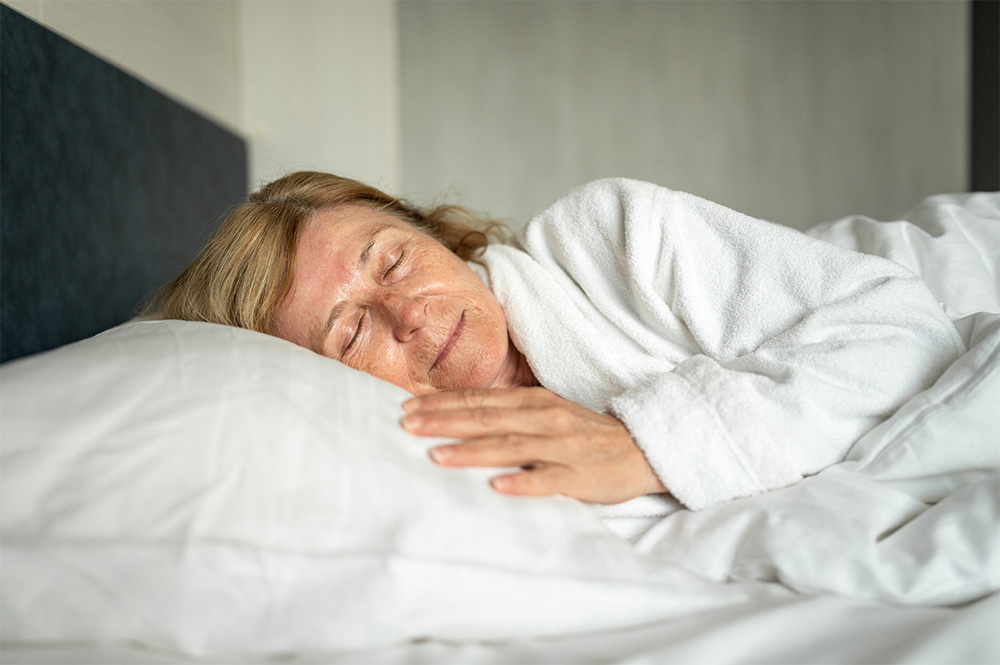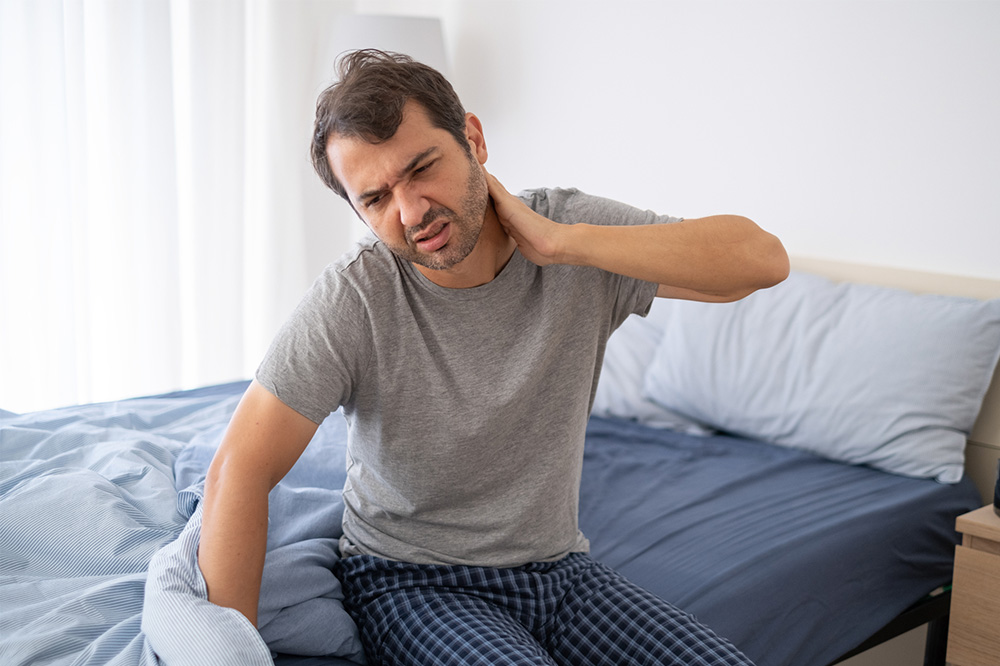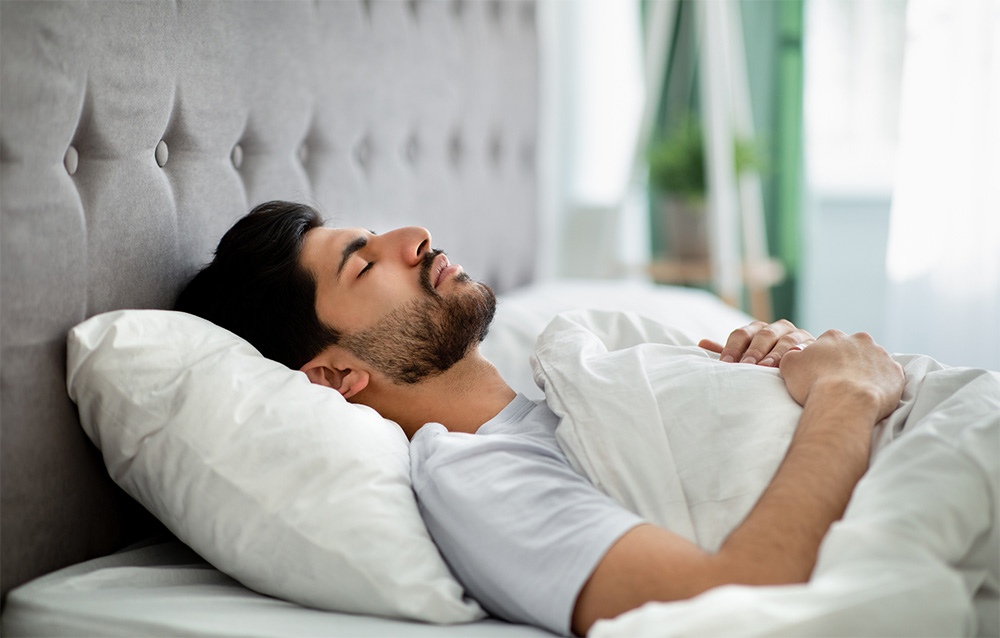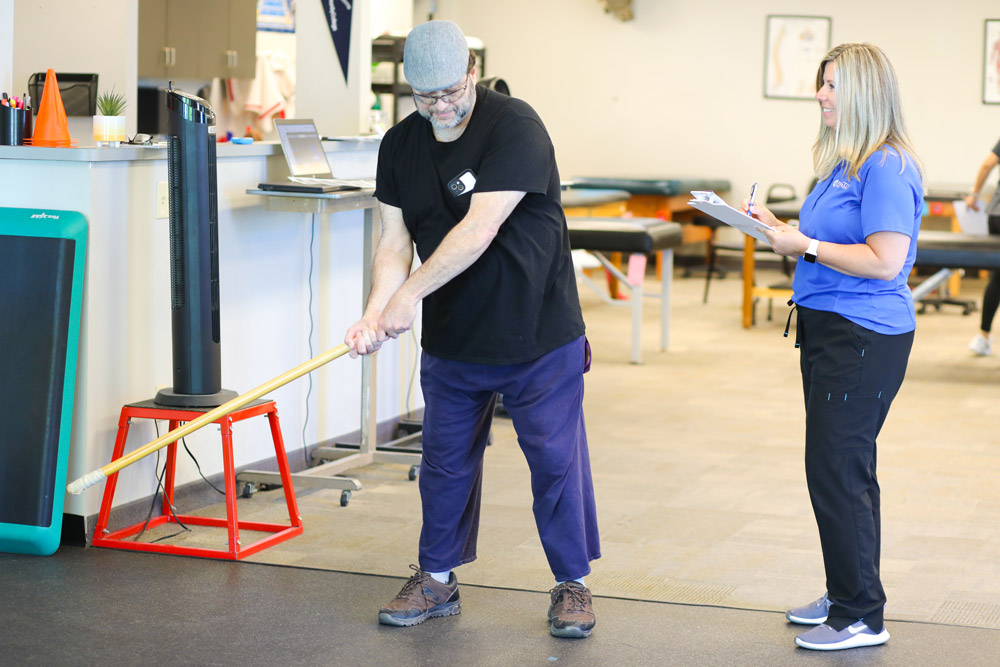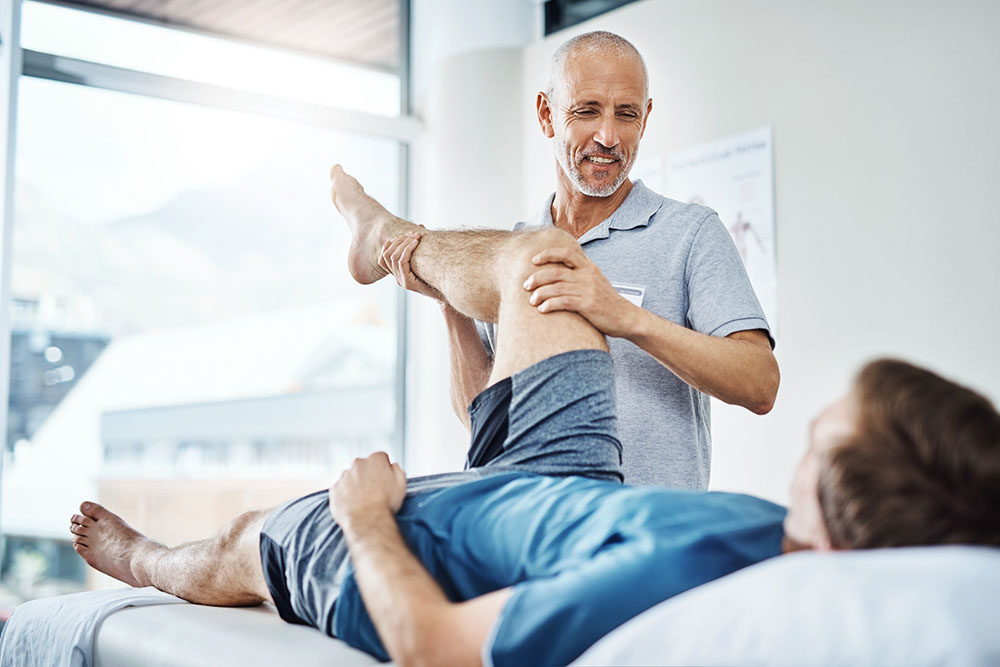March is National Sleep Awareness Month, and did you know the average person spends nearly a third of their life sleeping? Therefore, a 75-year-old individual has spent 25 of those precious years sleeping. Rest plays a critical function in our mental and physical well-being, thus making it essential to get quality sleep. Although you might have ignored your sleeping position in the past, how you sleep impacts how well-restored you feel when you wake up. So, what is the best sleeping position for health problems?
Sleeping Positions for Various Health Problems
According to the CDC, around 50-70 million adults in the U.S. have a wakefulness or sleep disorder. Many of these cases can be traced back to poor sleeping postures. Patients who embrace the best sleeping habits typically tend to sleep much better.
The ideal sleeping position can help treat sinus congestion, sleep apnea, headaches, neck pain, digestion, and more. Changing how you sleep will improve your mood and energy, thus leading to a healthier, happier life.
Today, we will examine the best sleeping position for various health problems to help you find relief from your discomfort. Adjusting may take time, but implementing the proper sleep position may make all the difference for your health.
Best Sleeping Position for Lower back pain
Research shows that about 7.5% of the entire population experiences some kind of lower back discomfort. The lower back is highly sensitive because it includes an interwoven series of tendons and bones. These include five vertebrae, muscles, discs, ligaments, and lumbar spine. Because the lower back supports your body weight, it can seriously impact your health if something goes wrong.
If you feel discomfort sleeping on your back, shift to a side position. Lay on either your left or right side with your shoulder fully planted on the mattress. It will help to place a small pillow or cushion between your knees and an extra one between the mattress and your waist.
Properly aligning your spine in sleep allows your back to relax into a more properly aligned position. Over a period of time, this can offer major relief for lower back discomfort.
Best Sleeping Position for Sleep Apnea
According to the American Sleep Apnea Association, about 22 million adults across the United States suffer from Obstructive Sleep Apnea (OSA). The condition can profoundly affect your health because it prevents your body from acquiring sufficient oxygen when sleeping.
Over time, it will impact your memory and weight and contribute to the onset of diabetes.
Sleep Better Council advises individuals suffering from sleep apnea to sleep on their side. It is the best way to ensure your airways are more stable. However, consider sleeping on the left rather than the right side to reduce reflux symptoms. Use the suggested method for lower back pain to further align your spine and aid in restful, restorative sleep.
Best Sleeping Position for Neck Pain
Almost everyone has experienced a stiff or sore neck at one point or another. According to the World Health Organization, neck and back pain are among the top disabling injuries. Luckily, a few adjustments to how you sleep can help manage neck pain.
Sleeping on your back is best for people suffering from back pain. It helps maintain the natural curves of your spine, thus elevating pain in the neck region. Use a small pillow – preferably a memory foam or cervical pillow – to slightly raise your head position.
These special pillows offer support under the neck with a slight dip where your head rests. This allows your spine to assume its natural curvature while stabilizing your head in your sleep.
Best Sleeping Position for Breathing Problems
Approximately 14.8 million adults suffer from one respiratory disease or the other. These individuals experience breathing problems when trying to get a good night’s sleep. Finding the best sleeping position for these individuals is, therefore, vital.
Sleeping supine (face up) is an excellent solution if you happen to fall into this category. Start by lying on your back with your torso and head facing upwards to take the pressure off your respiratory system. Slightly elevating your head can help improve lung capacity. However, sleep on the side with support between your knees if you suffer from sleep apnea to avoid obstructing your airway.
Best Sleeping Position for Digestion
Waking up in the middle of the night with acid reflux, heartburn, constipation, or gas is more than inconvenient. It can be miserable. However, about 70 million individuals are affected by digestive diseases. Therefore, what is the best sleeping position to help avoid digestion problems?
In addition to all of the other benefits offered, sleeping on your left side can help improve digestion. This position can ease constipation by increasing your chances of having a bowel movement when you wake up. It also supports pancreatic function, aiding food movement to the small intestines.
Best Sleeping Position to Improve Posture
According to NCBI research, 67.9% of examined subjects (938 girls and 918 boys) had at least one postural defect. These defects usually result from sitting all day at a desk, lounging on the couch, or looking down at smartphones.
The best sleeping position to improve posture is the back position. Lay straight on your bed, ensuring your back is as straight as possible. It is an excellent position because it ensures your spine rests naturally. Therefore, the possibility of developing irregular curves is kept at a minimum. Ensure your hands are resting by your side to make it safer for your shoulders.
We Are Here to Help
Are you concerned that pain or injury is negatively impacting your sleep quality, and how which sleeping position may help with health problems? ProActive Physical Therapy offers methods such as soft tissue mobilization, taping, and pain-relieving modalities to help reduce pain and improve your sleep. To learn more about how ProActive PT can help, schedule a free injury assessment today to sleep better and stay healthy.


